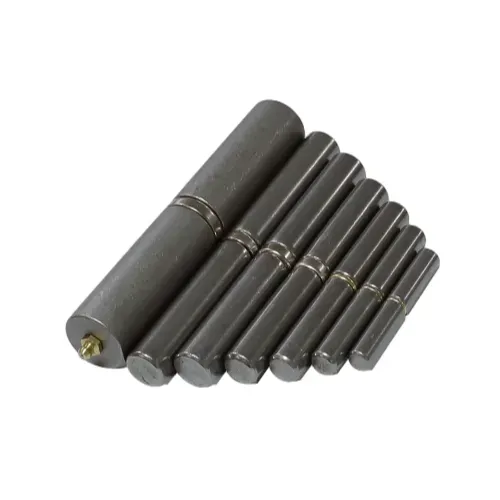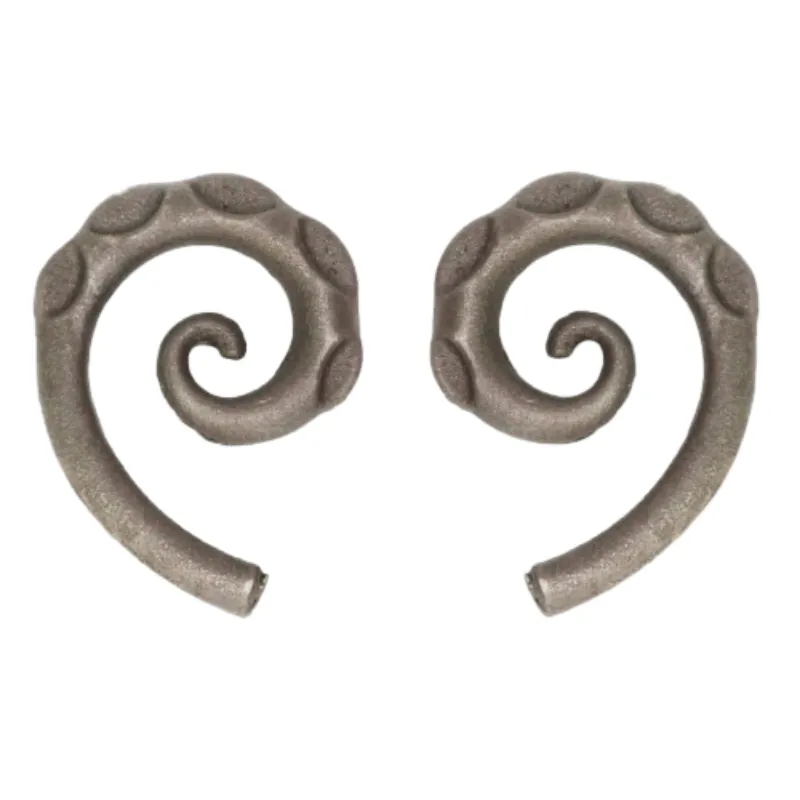
- Introduction to main door hinges
and their market relevance - Materials and design innovations in main door hinges
- Technical advantages of contemporary main door hinge systems
- Comparative analysis of leading manufacturers
- Customization options for wrought iron door and gate installations
- Application cases demonstrating practical implementation
- Conclusion: Market outlook for main door hinges and related designs

(main door hinges)
Exploring the Significance of Main Door Hinges in Modern Architecture
In the rapidly evolving domain of door hardware, main door hinges play a pivotal role not only in security but also in aesthetics and durability. According to industry research, the global hinges market reached a valuation of USD 6.8 billion in 2023, with residential usage accounting for nearly 47% of the demand. As modern housing trends prioritize both form and function, consumers increasingly recognize that the choice of hinges significantly impacts door performance and longevity. With the surge in custom home construction and wrought iron structures, selecting suitable hinges is more crucial than ever to achieve seamless integration into architectural design.
Innovative Materials and Design for Enhanced Door Hinges
The modern marketplace offers a plethora of hinges catering to diverse design requirements and material compatibilities. Stainless steel and brass remain popular for their corrosion resistance, but wrought iron is making a distinct comeback—especially in custom luxury projects. Emerging trends reveal increased usage of powder-coated and high-tensile alloys that offer remarkable wear resistance, supporting heavier doors and ornate entrance features. Architects increasingly specify hinges with concealed fasteners, ball-bearing mechanisms, and self-lubricating bushings to address the dual demands of minimal maintenance and aesthetic invisibility. In addition, manufacturers are integrating finishes that blend with the growing interest in bold wrought iron main door design and wrought iron main gate design styles, addressing both indoor and outdoor architectural visions.
Technical Advantages of Contemporary Main Door Hinge Systems
The evolution in main door hinges is underscored by significant technical advancements aimed at durability and performance. Modern hinge assemblies are designed to endure rigorous usage: double ball-bearing and adjustable tension mechanisms now boast a tested lifespan of over 250,000 open-close cycles. Enhanced load distribution remains a highlight, with premium hinges supporting up to 300 kg per pair, accommodating the weight of heavy wrought iron doors. Fire-rated and anti-tamper options have become standard for securing main entry points, aligning with global building codes. Key product features now include quick-release pins for easy installation, silent operation, and anti-corrosive coatings that surpass 1,000-hour salt spray tests. These combined factors are driving adoption rates and reshaping consumer expectations in both residential and commercial sectors.
Comparative Analysis: Leading Main Door Hinge Manufacturers
| Manufacturer | Material Range | Max. Load (Per Pair) | Cycle Testing | Certifications | Main Segment |
|---|---|---|---|---|---|
| Hafele | Stainless Steel, Brass, Iron | 220 kg | 200,000 cycles | EN 1935, CE | Residential, Commercial |
| Dorma | Stainless Steel, Powder-coated Alloys | 300 kg | 250,000 cycles | UL, EN 1634-1 | Luxury, Fire-Rated |
| Godrej | Brass, Wrought Iron | 180 kg | 150,000 cycles | ISI, EN 1935 | Residential, Industrial |
| McKinney | Steel, Stainless Steel | 275 kg | 200,000 cycles | ANSI/BHMA A156.1 | Commercial, Institutional |
The above comparison highlights the nuances in hinge offerings from globally recognized brands. Dorma leads in capacity and technical robustness, while companies like Godrej emphasize versatility in material selection, as seen in their wrought iron adaptations. Certifications play an important role in selecting reliable hinges; producers with European (EN 1935) and American (ANSI/BHMA) standards signal top-tier quality and compliance.
Customization for Wrought Iron Main Door and Gate Designs
As wrought iron installations increase in popularity for both doors and gates, the need for customized hinge solutions intensifies. Designers are collaborating with manufacturers to develop bespoke hinges that cater to the intricate patterns and significant weight associated with wrought iron main door and main gate designs. Custom powder-coating, laser-etched patterns, and unique mounting plates are now widely available, ensuring compatibility with non-standard frame sizes and decorative motifs. Some fabricators even offer modular hinge assemblies wherein finishes, thickness, and pin types can be combined per customer requirements. The development of smart hinge technology, integrating access control sensors and tamper alerts, further attests to the sector’s evolving landscape for custom ironwork.
Application Cases: Delivering Functional and Aesthetic Excellence
The practical value of high-performance hinges emerges most vividly in real-world installations. In a luxury villa project in Dubai, architects specified concealed ball-bearing hinges capable of supporting 250 kg wrought iron doors, achieving seamless movement with no visible hardware interruptions. Meanwhile, heritage property renovations in Europe often utilize heavy-duty forged brass hinges with bespoke plating, blending seamlessly with original architectural features while supporting updated security needs. Commercial properties in Singapore have adopted anti-fingerprint stainless steel hinges with integrated dampeners on primary entrance gates—demonstrating a substantial 37% reduction in maintenance call-outs within two years, according to facility management reports. These examples underline the impact of robust hinge selection on project outcomes, spanning from mechanical reliability to visual harmony.
Conclusion: Future Prospects for Main Door Hinges and Related Designs
Continuous innovation in main door hinges is poised to reshape both residential and commercial architecture. With the global emphasis on security, design integration, and sustainability, demand for advanced hinge systems is anticipated to rise by 6.2% CAGR through 2029. Manufacturers are responding with environmentally friendly materials, modular configurations, and integrated IoT capabilities—all tailored to meet the growing appetite for custom wrought iron main door and gate designs. As property developers and homeowners become increasingly discerning, selecting the right hinge partners and solutions remains fundamental to achieving enduring value and timeless style in modern construction.

(main door hinges)
FAQS on main door hinges
Q: What are main door hinges and why are they important?
A: Main door hinges are mechanical bearings that connect your door to the frame, allowing it to open and close smoothly. They are crucial for security and durability. Choosing the right hinges ensures the main door operates properly.Q: Are there specific hinges recommended for wrought iron main door designs?
A: Yes, heavy-duty or ball bearing hinges are best for wrought iron main door designs due to their strength and support. These hinges can handle the extra weight of wrought iron doors. Proper hinges prevent sagging and maintain functionality.Q: How do I choose main door hinges for a wrought iron main gate design?
A: Look for corrosion-resistant, robust hinges specifically rated for exterior wrought iron main gates. Stainless steel or brass hinges with anti-rust coatings are ideal. Size and load capacity are key for smooth operation.Q: Can I install main door hinges myself on a wrought iron main door?
A: Installation is possible but requires the right tools and expertise, especially for heavy wrought iron doors. It’s recommended to hire a professional to ensure perfect alignment and security. Proper installation extends hinge life and provides extra safety.Q: How often should main door hinges on wrought iron doors or gates be maintained?
A: Hinges on wrought iron doors or gates should be checked and lubricated every six months. Regular maintenance prevents squeaking, rust, and ensures smooth operation. Quick inspections can help spot issues early.-
Unique Design Ideas for Wrought Iron Wall DecorNewsJul.21,2025
-
Stainless Steel Pulley for Marine ApplicationsNewsJul.21,2025
-
Safety Features in Industrial Track PulleyNewsJul.21,2025
-
Precision Tolerances for 2 Inch U Groove WheelsNewsJul.21,2025
-
Iron Fence Spears Corrosion Protection MethodsNewsJul.21,2025
-
Iron Decorative Panels for Balcony ScreensNewsJul.21,2025
-
Industrial Applications Requiring Heavy Duty PulleyNewsJul.21,2025












